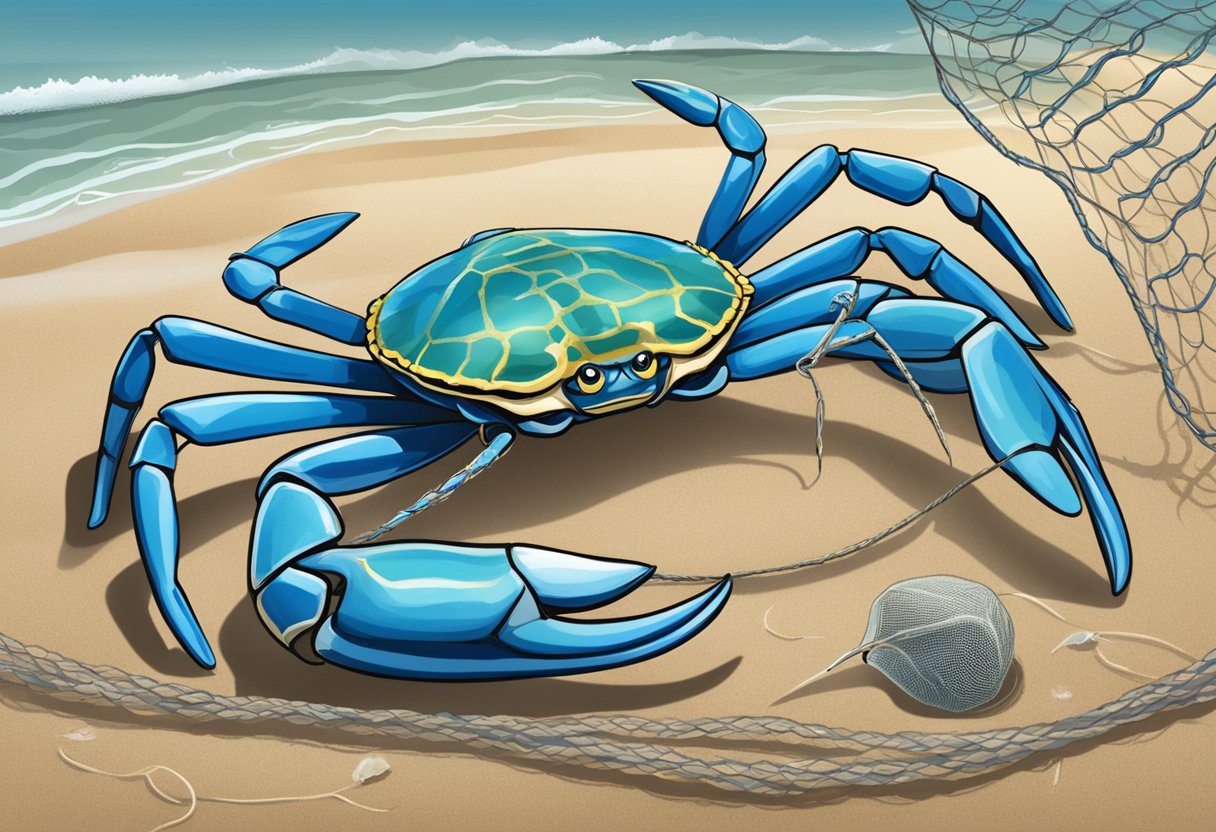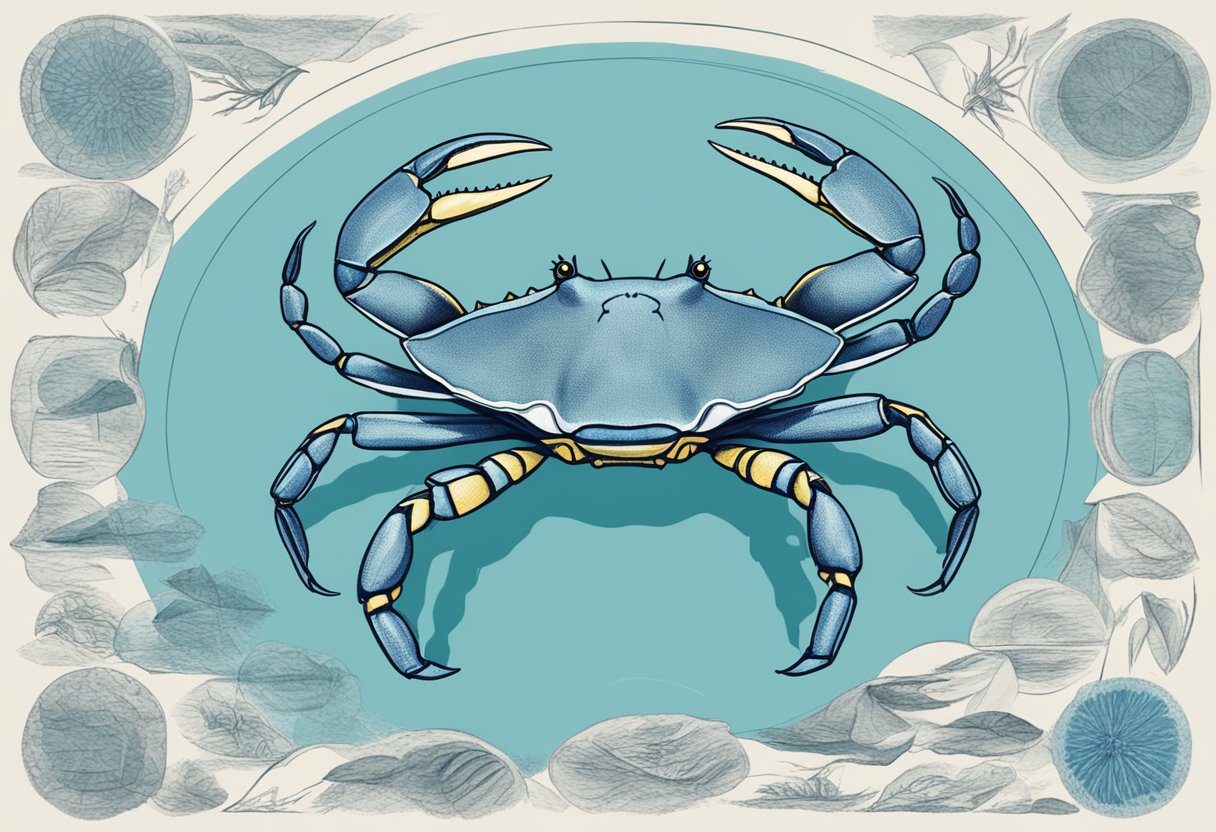Blue swimmer crabs, also known as Portunus pelagicus or Portunus armatus, are a popular seafood delicacy in Australia, particularly in Western Australia, South Australia, and New South Wales. These crabs are known for their distinctive blue colour and large front pincers. They are powerful swimmers and scavengers, making them a target for both commercial and recreational fishers.
If you're interested in catching blue swimmer crabs, it's important to understand the biology and identification of the species. Blue swimmer crabs are a tropical species that are found in estuaries and inshore marine waters. They are usually between 15-20cm in size and can be identified by their bright blue colour and large front pincers. Female blue swimmer crabs, also known as "jennies," are less colourful than males.
When fishing for blue swimmer crabs, it's important to be aware of local regulations and bag limits. In Western Australia, for example, there are specific rules around the size of crabs that can be caught and the number of crabs that can be kept per person per day. It's also important to use the right equipment and techniques, such as drop netting or scooping, to avoid damaging the crabs or their habitat.
Key Takeaways
- Blue swimmer crabs are a popular seafood delicacy in Australia, particularly in Western Australia, South Australia, and New South Wales.
- These crabs are powerful swimmers and scavengers, making them a target for both commercial and recreational fishers.
- When fishing for blue swimmer crabs, it's important to understand the biology and identification of the species, as well as local regulations and bag limits.
Biology and Identification

Physical Characteristics
The Blue Swimmer Crab (Portunus pelagicus) is a medium-sized crab, with a carapace width of up to 20cm. The carapace is usually a mottled greenish-brown colour, with a characteristic blue hue on the legs and claws. Males can be distinguished from females by their larger claws, which are elongated and paddle-shaped. Juveniles have a lighter colouration and lack the characteristic blue on their legs and claws.
Life Cycle and Reproduction
The Blue Swimmer Crab has a complex life cycle, which includes several distinct larval stages. After hatching from eggs, the larvae develop into zoea, megalopa and finally juvenile crabs. Female crabs reach maturity at around 6-8 months of age and can carry up to 2 million eggs at a time. Females with eggs are known as "berried" or "jennies". Spawning usually occurs in estuaries during the warmer months.
Habitat and Distribution
The Blue Swimmer Crab is found in coastal waters throughout the tropical and subtropical regions of the Indo-Pacific, including Western Australia and New Caledonia. They are typically found in shallow bays with sandy bottoms, although they can also be found in estuaries and intertidal zones.
Diet and Predation
The Blue Swimmer Crab is an opportunistic predator, feeding on a variety of prey including fish, crustaceans and other invertebrates. They are themselves preyed upon by larger fish and crustaceans, including lobsters.
Conservation Status
The Blue Swimmer Crab is not currently evaluated by the IUCN Red List, however, populations may be impacted by human activities such as recreational fishing.
Human Interaction
The Blue Swimmer Crab is an important commercial species, with its meat considered a delicacy in many parts of the world. Recreational fishers are also known to target the species, with catch limits and regulations in place to manage populations. In Western Australia, recreational fishers are limited to a boat limit of 20 crabs per day, and must use drop nets or floats to catch them. The Blue Swimmer Crab is also known by several other common names, including the Blue Manna Crab, Manna Crab, Swimming Crab, Sand Crab, and Flower Crab. It should not be confused with the Callinectes sapidus, also known as the Blue Crab, which is a different species found in the Atlantic Ocean.
Fishing and Regulations

Fishing Techniques
Fishing for blue swimmer crab is a popular recreational activity in Western Australia, South Australia, and New South Wales. The most common method of catching crabs is by using drop nets, which are lowered into the water and left for a period of time to allow the crabs to enter. Another popular method is using a float and flap system, which involves a float attached to a line with a flap or bait bag attached to the end. The baited flap is then lowered into the water and left to attract crabs.
Legal Considerations
When fishing for blue swimmer crab, it is important to be aware of the regulations in your area. In Western Australia, bag and size limits apply, and closed seasons apply in certain areas. If you are fishing for crabs with the use of a powered vessel, a Recreational Fishing from Boat Licence is required. Fishing for this species from a powered boat also requires an RFBL in South Australia. It is important to measure all crabs as soon as they are caught, and any undersize crabs should be immediately returned to the water.
Culinary Uses
The meat of the blue swimmer crab is a delicacy, with a sweet and delicate flavour that is similar to prawn, crayfish, and marron. The meat is often used in salads, soups, and curries, and is also commonly served on its own. To preserve the quality of the meat, it is recommended to store the crabs on ice as soon as possible after they are caught.
Sustainability and Management
Blue swimmer crab populations are managed through a variety of measures, including size and bag limits, closed seasons, and fishing gear restrictions. In Western Australia, the annual commercial catch of blue swimmer crab usually exceeds 1,000 tonnes, making up more than half of Australia's total catch of this species. The remainder are caught in South Australia, southern Queensland, and New South Wales. Recreational fishers also play a role in the management of blue swimmer crab populations, and it is important to follow all regulations and size limits to ensure the sustainability of this species.
Frequently Asked Questions

How much do blue swimmer crabs typically cost?
Blue swimmer crabs are a popular seafood item and their price can vary depending on the location and availability. Typically, they are sold by the kilogram and can range from £15 to £30 per kilogram.
What are some popular recipes for blue swimmer crabs?
Blue swimmer crabs are a versatile ingredient and can be used in a variety of dishes. Some popular recipes include crab cakes, crab bisque, crab salad, and crab curry. You can also simply steam or boil the crabs and serve them with butter and lemon.
What's the average size of a blue swimmer crab?
Blue swimmer crabs can vary in size, but on average they measure around 15-20 centimetres across the carapace. The males are generally larger than the females and have larger claws.
How can you tell apart male and female blue swimmer crabs?
Male blue swimmer crabs have a distinctive T-shaped abdomen, while females have a broad abdomen that is rounded at the edge. The males also have larger claws and are more colourful than the females.
Which locations are known for their blue swimmer crab populations?
Blue swimmer crabs are found in coastal waters around the world, but they are particularly abundant in Australia, where they are a popular seafood item. Other countries with significant blue swimmer crab populations include Indonesia, Malaysia, and Thailand.
What does blue swimmer crab taste like?
Blue swimmer crabs have a sweet, delicate flavour that is often compared to that of lobster or prawns. The meat is tender and succulent, and can be used in a variety of dishes.

